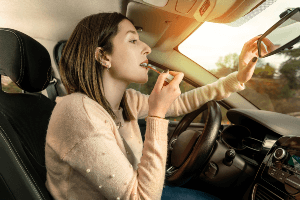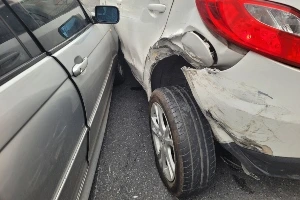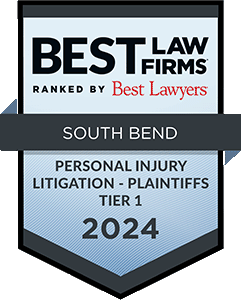 When most people think about distracted driving, they think about someone using his or her cellphone to text or scroll through social media. However, there are more ways drivers may become distracted behind the wheel that do not get labeled as dangerous as texting and driving.
When most people think about distracted driving, they think about someone using his or her cellphone to text or scroll through social media. However, there are more ways drivers may become distracted behind the wheel that do not get labeled as dangerous as texting and driving.
Below, we discuss some of the most commonly overlooked distracted driving practices that pose a serious risk to those on the road.
If you were injured by a distracted driver, you should call our South Bend-area car crash lawyers as soon as possible. We offer a free consultation, and there are no upfront fees if we take on your case. You only play us when we successfully recover compensation for you.
Call us today at (574) 444-0741
Types of Distractions
There are three categories of distractions. Certain actions may fall into one of them while others may fall into multiple categories.
Cognitive Distractions
A cognitive distraction is when your mind is not fully focused on a particular task. For drivers, this could mean they have their eyes on the road and their hands on the steering wheel, but their mind is not focused on their surroundings.
Drivers should not just be focusing on the road ahead of their vehicle. A driver who is cognitively aware should also take note of how other drivers are reacting to their driving. For example, if vehicles are passing him or her on the right, it could be because he or she is driving too slowly in the travel lane.
Some examples of cognitive distractions include the following:
- Daydreaming – this is also known as highway hypnosis, and it occurs when a driver’s mind is focused on something else, but has both hands and eyes on the wheel.
- Talking on the phone – although using hands-free technology to talk on the phone is not illegal, it is still distracting because a driver’s reaction time may be diminished.
- Talking to passengers – even with two pairs of eyes on the road, talking to passengers in a vehicle takes the driver’s mind away from the road.
Some drivers may even let their minds wander behind the wheel while listening to the radio, a podcast or music.
Visual Distractions
Visual distractions may be the most dangerous types of distraction because a driver’s eyes are not on the road.
According to the National Highway Traffic Safety Administration (NHTSA), taking your eyes off the road for five seconds while going 55 mph is equivalent to driving the length of a football field with your eyes closed.
Things like looking at roadside distractions or keeping an eye on children in the back seat could take a driver’s eyes off the road. Doing this in heavy traffic may be especially dangerous, as drivers are more likely to have to brake more often due to a slow down in traffic.
One example of an overlooked danger is “rubbernecking.” This is when drivers slow down to watch the scene of an accident. Not only does this significantly slow down traffic, especially when the crash is not blocking the road on that driver’s lane, but it also increases the risk of rear-end collisions.
Manual Distractions
When a driver takes his or her hands off the steering wheel, this is a manual distraction. Although there is technically no law requiring drivers to keep both hands on the steering wheel, this does not mean driving with only one hand on the wheel does not pose a risk.
Drivers fiddling with the radio could take their hands off the steering wheel. If the driver is reaching for something, he or she might keep his or her eyes on the road, but his or her hands might pull the steering wheel slightly one way or the other. Depending on the road conditions, this could cause the vehicle to veer into another lane or even spin out.
Overall Distractions
There are some actions drivers might do behind the wheel that encompass all three categories of distracted driving. This includes the following:
- Eating
- Drinking
- Self-grooming
- Adjusting a GPS
Even if a driver keeps only his or her hands, eyes or mind on the road, a lack of any other two is considered distracted driving.
Injured By a Distracted Driver? Call Us Today
Drivers who are distracted and cause a collision could be liable for damages if an accident occurs.
Let our knowledgeable attorneys help you through the legal process. We have helped accident victims recover the compensation they need for medical bills, lost wages and other damages.
We do not charge you anything while we work on your case. You only pay us when we win, so there is no risk to you.











